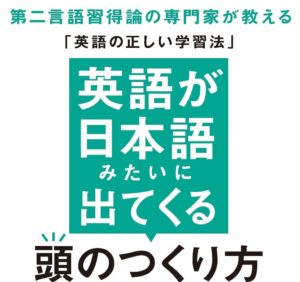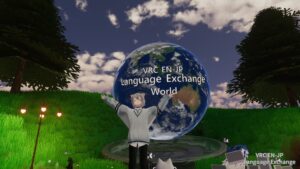NHKラジオ英語講座 4月と3月の難易度を比べてみた
日本語の後に英語版があります / English version is available below.
NHKのラジオ英語講座は毎年4月に内容がリニューアルされます。この記事では、2025年4月と2025年3月の「基礎英語1」「基礎英語2」「ラジオ英会話」「ラジオ英会話サブノート」「英会話タイムトライアル」「エンジョイ・シンプル・イングリッシュ」「ラジオビジネス英語」の難易度を比べてみました。
僕がNHKラジオ講座を始めたのは2025年2月からです。つまり、ちょうど年度の終わりが近いタイミングでのスタートでした。
当時、「基礎英語レベル1」の3月末の内容を聞いて、「これって中学生向けの教材なのに、たまに難しく感じるぞ……」と落ち込んだことを覚えています。「自分の英語レベルはどれだけ低いんだろう」と。
でも、4月からの新しいシリーズを聞いてみて、びっくり。内容がとてもやさしい! 「えっ、同じ教材なのにこんなに差があるの?」と思うほどです。
逆に言えば、1日15分でも、1年間コツコツ続けると、こんなに成長できるんだと気づきました。これにはちょっと感動しました。
それからもうひとつ。実は僕、ダイアナ・ガーネットさんのファンなんです。昔「のどじまんTHEワールド!」で彼女の歌を聞いてからずっと印象に残っていて、今回「基礎英語1」でナビゲーターを務めていると知ったときは、正直すごくうれしかったです。あの歌声と、やさしい語り口。毎日ラジオを聴くのが楽しみになる理由のひとつになっています。
講座ごとの印象まとめ(2025年4月と3月の比較)
- 基礎英語1:4月からは超初心者向け。3月は意外と手ごわい。1年後の成長を実感できる構成。
- 基礎英語2:3月は中学卒業レベル(A2後半)。4月は中1〜中2レベル(A2前半)にリセット。
- 僕にとっては4月の内容がちょうどいい難易度で、毎日楽しく学べました。
- さらに、オリエンタルラジオの藤森慎吾さんが生徒役として登場することで、番組の雰囲気が一気にポップになっていて、聞いていて明るい気持ちになります。
- ラジオ英会話:ネイティブのスピードで会話が進む。難しめだが、解説はていねい。
- 実は、3月の放送よりも4月の方がやややさしく感じました。
- もちろんすべて完璧に理解できるわけではありませんが、不思議とストレスなく楽しめるんです。
- 3月の文法パートは途中から聞き始めたせいか、ほとんど理解できなかったのですが、4月からの文法解説は今のところしっかりついていけています。
- ラジオ英会話サブノート:ラジオ英会話に連動しているため、やはり難易度は下がっていました。
- いつも週末にまとめてやっていたのですが、先週分でとうとう挫折したので、これからは毎日コツコツ進めるスタイルに変えようと思います。
- このテキストだけは書き込み式なので、毎月紙の本で購入していますが、今年度は本のサイズがかなり小さくなっていて、最初は「間違って買ったのか!?」と焦りました。
- とはいえ、ライティングの練習としてはとても良い内容で、楽しみながら取り組めています。
- 英会話タイムトライアル:瞬間英作文のような構成で、ユニークなトレーニングができる教材。
- 3月は難しすぎて、最初から考えるのを諦めてしまったほど。
- 4月になって難易度が下がり、「なんとか食らいつけるかも」と思えるように。
- 他の講座と違って特徴的な内容なので、スピーキング力を高めたい人には非常におすすめです。
- エンジョイ・シンプル・イングリッシュ:難易度は通年で一定。聞きやすく、楽しみやすい。
- 一度聞いただけでは理解が難しいので、「1回聞く → 翻訳を読む → もう一度聞く」のルーチンで楽しんでいます。
- 4月から新しいストーリーが始まったのも楽しみのひとつです。
- ラジオビジネス英語:唯一、苦痛を感じた教材。でも4月から少し希望が見えた。
- 3月は心が折れて、聞き流すだけになってしまいました。
- 4月からは難易度が下がり、少し前向きな気持ちで取り組めるように。
- 今でも内容は難しく、訳を読んでやっと意味がわかるレベルですが、できるところまでは続けてみようと思えました。
総括:4月から始めるのがベスト!
3月と4月を比べてみてわかったのは、僕が想像していた以上に、難易度に大きな差があるということです。
逆に言えば、すべての教材が、1年間でここまでレベルアップできるように設計されているということでもあり、未来の自分に対してちょっとした希望が持てました。
そして、結論として思ったのは―― **「4月から始めるのが、やっぱり一番いい!」**ということ。
番組がちょうど始まったタイミングで、最初からフルで楽しめるのは、とても気分が良いです。正直、2月や3月に始めたときよりも、4月の今のほうがずっと楽しいと感じています。
これから1年間、無理なく、でもしっかり継続していけるように頑張っていきたいと思います。
みなさんも一緒にがんばりましょう!
English Version – Comparing March and April NHK English Programs
NHK updates its English radio programs every April. In this post, I compare the difficulty levels of each program in March and April 2025: “Basic English 1,” “Basic English 2,” “Radio Eikaiwa,” “Radio Eikaiwa Sub-Note,” “Eikaiwa Time Trial,” “Enjoy Simple English,” and “Radio Business English.”
I started using NHK Radio English programs in February 2025, right near the end of the academic year. Back then, I listened to “Basic English 1” in March and felt like, “Isn’t this supposed to be for junior high school students? Why does it feel hard?” I honestly felt a bit discouraged.
But when I listened to the April version, I was surprised at how much easier it was. I realized that even 15 minutes a day, if done consistently, could bring me up to that level within a year — and that was really inspiring.
Also, I’m a big fan of Diana Garnet, one of the hosts of “Basic English 1.” I remember her amazing performance on Nodojiman THE World! years ago. Knowing she’s now helping learners like me is both nostalgic and motivating.
Program Impressions (Comparing March and April)
- Basic English 1: April is beginner-friendly; March was surprisingly challenging. Great way to feel your progress.
- Basic English 2: March = upper A2; April = lower A2 level.
- The April content felt just right for me and was fun to study daily.
- With Shingo Fujimori from Oriental Radio joining as the student character, the show gained a light, pop vibe that makes it more enjoyable.
- Radio Eikaiwa: Still fast-paced and slightly difficult, but easier in April than March.
- Though I can’t understand everything, I can enjoy it without stress.
- In March, I couldn’t follow the grammar at all, but in April, it feels more approachable.
- Radio Eikaiwa Sub-Note: This workbook follows Radio Eikaiwa, so its difficulty also dropped.
- I used to do it in one weekend session, but after struggling recently, I plan to switch to doing a little each day.
- This is the only textbook I buy in print, since it’s made for writing.
- The new version is much smaller than last year’s — I was honestly worried I ordered the wrong book!
- Still, it’s been a great tool to practice writing, and I enjoy it a lot.
- Eikaiwa Time Trial: Like instant English composition — a unique and useful way to practice speaking.
- March was too difficult, and I gave up trying to think of my own answers.
- In April, the difficulty dropped, and I felt I could finally give it a shot.
- Among the NHK programs, this one stands out for speaking-focused learners.
- Enjoy Simple English: The difficulty seems consistent all year long.
- I can’t fully understand it on the first listen, so I follow a routine: listen once → read the translation → listen again.
- A new story genre started in April, which makes it even more fun to follow.
- Radio Business English: This was the hardest for me — but April gave me a bit of hope.
- In March, I totally gave up and just let it play in the background.
- April’s version feels easier, and I feel more motivated to try again.
- I still can’t follow the content by ear — I only understand after reading the translation — but I’ll continue as far as I can.
Final Thoughts: April is the Best Time to Start!
What surprised me most was just how different the difficulty level was between March and April. But that also means these programs are designed to help learners improve a lot over one year.
My conclusion? April is the best time to start!
It feels great to begin from the very first lesson. Compared to February or March, I’m enjoying April’s lessons way more. I’ll do my best to keep going throughout the year.
Let’s all keep learning together!

